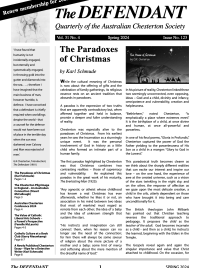How do you run a book club? What books do you choose? How do you gain access to them for the book club members? A long-time Chesterton Society member and contributor to The Defendant, Garry Nieuwkamp, offers some responses to these questions based on his recent experience.

During the period of uncertainty that descended on us as a plague, my local parish started a book club. It was my response to our parish priest, Fr Vince, calling for anyone with ideas that might tap into the ‘new evangelisation’ to have a go.
In the back of my mind was Chesterton’s teenage enthusiasm for debating and learning. There is something appealing about a society of readers meeting to exchange ideas. Think of the Inklings or the Apostles or the Bloomsbury group or the Algonquin round table.
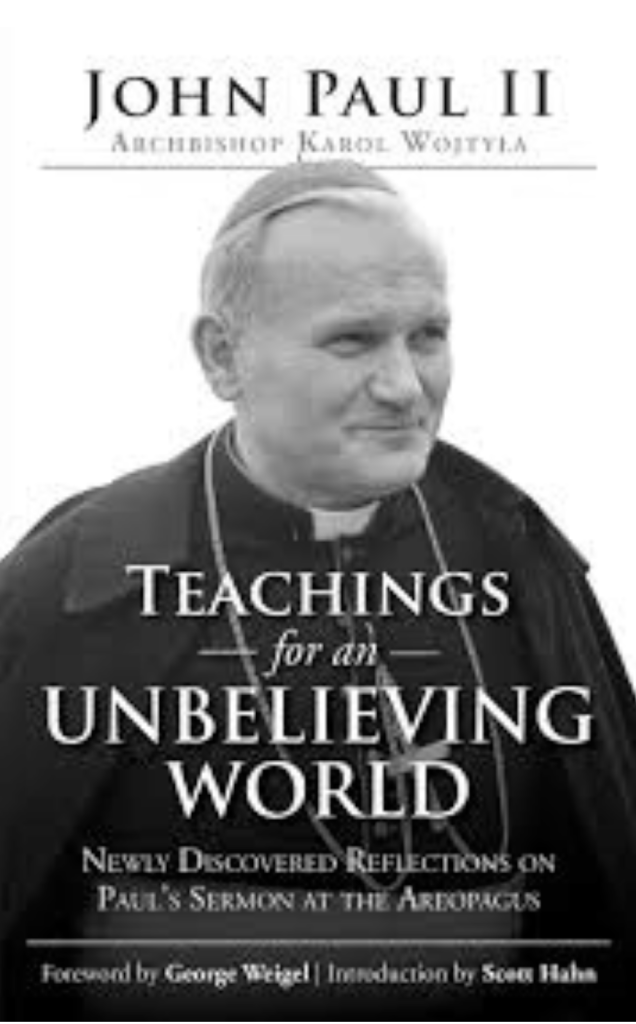
The last Friday of every month is earmarked for the club. It is held in the late afternoon for 90 minutes in the local parish offices. The last 10 minutes or so are devoted to a discussion about future reading.
To avoid the problem of a delay in starting (while waiting to obtain books), our very first session was devoted to Catholic poetry. At the end of that session (in February 2021) we decided to read Teachings for an Unbelieving World: Newly Discovered Reflections on Paul’s Sermon at the Areopagus by Archbishop Karol Wojtyla.
Factors in choosing books
A few problems became obvious from the beginning. The price of the chosen book had to be a consideration. And so, books that were in the public domain and available at Archive or Gutenberg were attractive as options.
To circumvent delays in obtaining books, our reading list in those early meetings was set at least a couple of months in advance, giving us plenty of time to access the books. After those first few meetings, with interruptions from a certain virus working its way through the Greek alphabet, our group settled into a routine.
Choosing what books to read can be tricky. It doesn’t help to make a recommendation only to find that the book is no longer available, or is difficult to find. Research prior to the recommendation is a prerequisite.
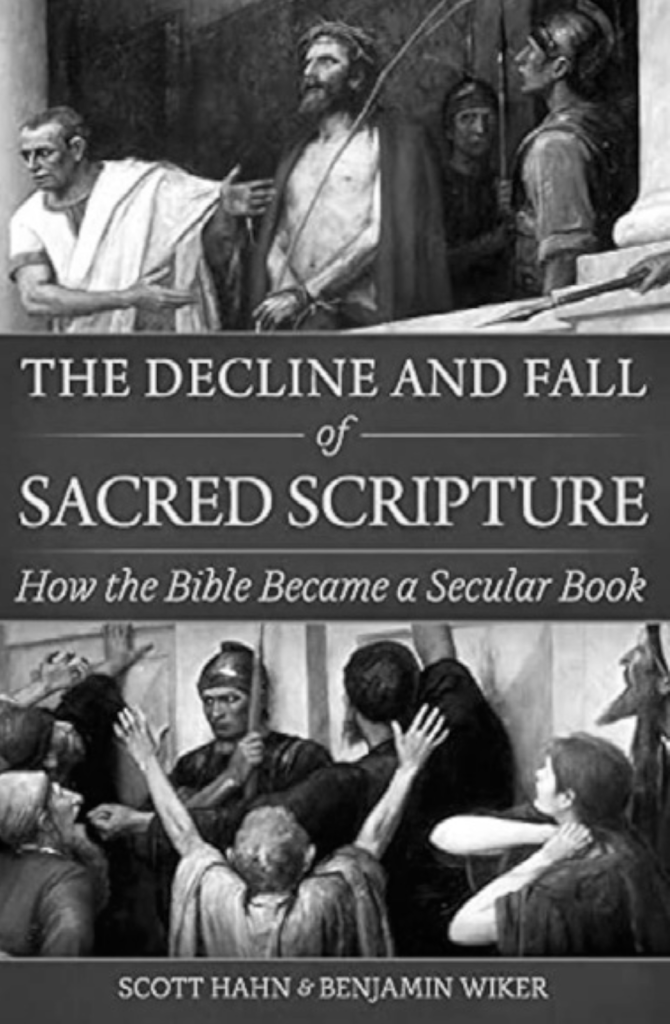
As we have fallen organically into the pattern of one book a month, there has been a tendency to pick books of a certain length, such that those members of the book club working full time could easily complete the reading task without its becoming a chore. There have been exceptions. One was Saint Augustine’s Confessions. We divided that book into two parts, and so read it over two months. The other was Thomas Merton’s The Seven Storey Mountain.
Availability has meant that those authors who have been popular over the years and have never been out of print make easy choices.
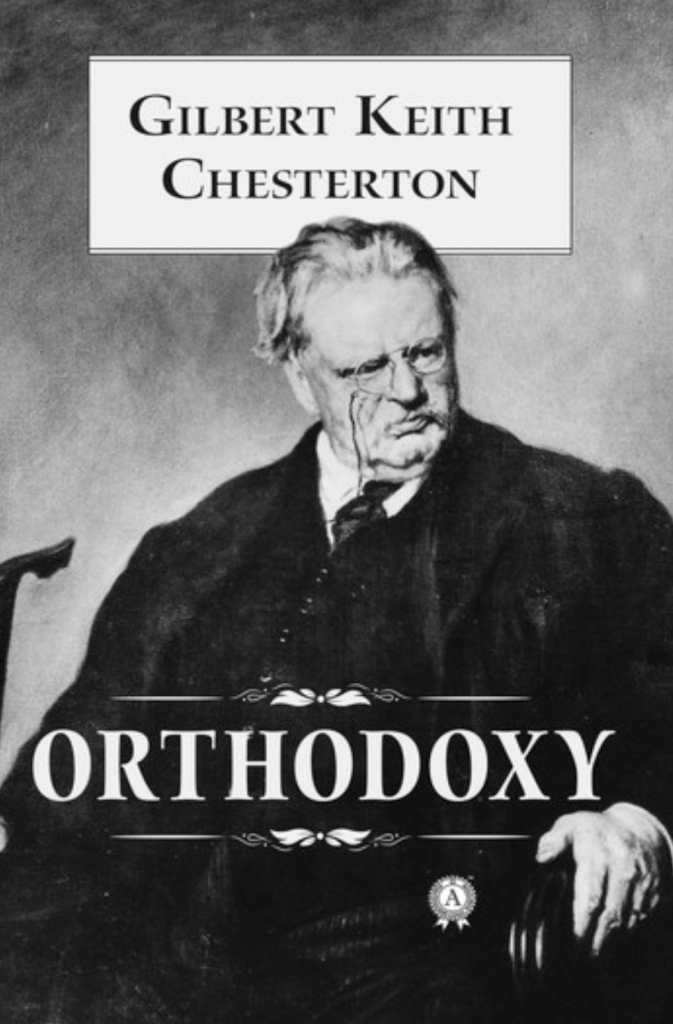
Soon after starting the book club we tackled Chesterton’s Orthodoxy. The feedback was predictable. It’s a difficult book to read, but once you learn to ‘speak Chesterton’, which takes about the first four chapters of Orthodoxy, it becomes easier. All agreed it was a significant book and worth the effort. A year later we read Chesterton’s Heretics.
Borrowing books from the local library was rarely an option. Only on one occasion were we able to access the books we needed when we borrowed all copies of The Minister and the Murderer by Stuart Kelly. A true story, when a convinced murderer who had completed his sentence wanted to become an ordained minister in the Church of Scotland. The book’s title alone sparked an interest.
Fiction versus non-fiction is a natural divide. We have mostly stuck with non-fiction, but very early on we read Brideshead Revisited by Evelyn Waugh. Picking out the themes of a work of fiction requires sifting through the narrative. Online resources here can be a help.
Fr Robert Lauder’s online lecture series on the Catholic novel have been useful, not only for the analysis of various novels, but as a source of inspiration for future reading. We have read three works of fiction in the last year that have featured in this lecture series: The Power and the Glory by Graham Greene, The Diary of a Country Priest by Georges Bernanos, and Death Comes for the Archbishop by Willa Cather.
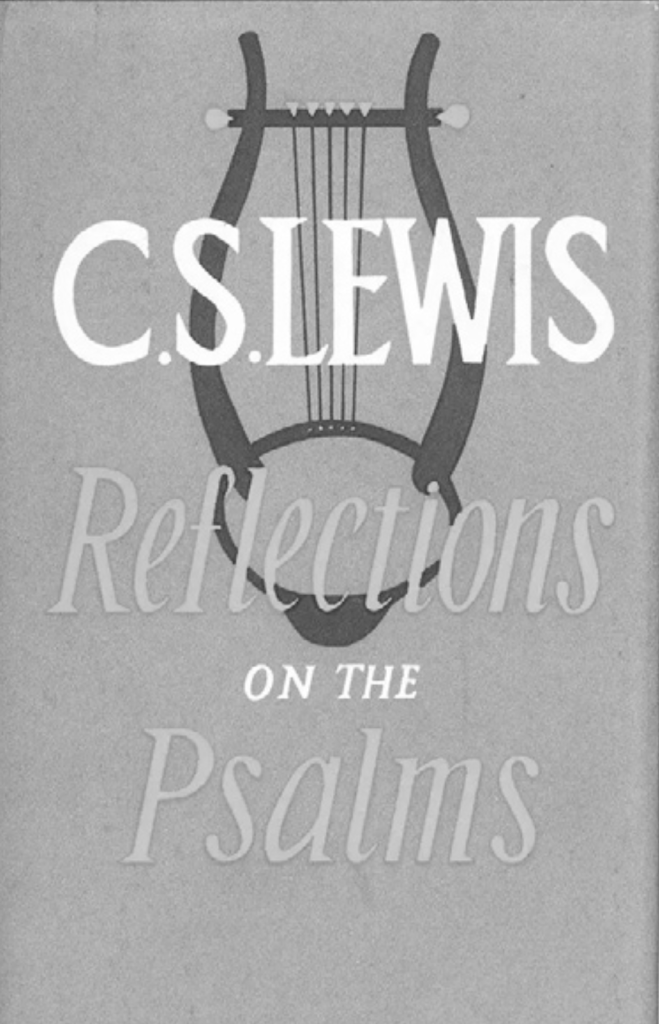
Apart from Chesterton, a number of other authors have been revisited in our book club. C.S. Lewis is a reader’s delight. The Screwtape Letters was our introduction to Lewis. We have subsequently read The Great Divorce, The Abolition of Man, and Reflections on the Psalms. Compared to Chesterton, reading C.S. Lewis is a walk in the park.
Sally Read has been a great find. Her conversion story Night’s Bright Darkness was read in our first year. It was so beautifully written that it was a no brainer that we would tackle Annunciation, her second book. Sally Read is a poet and has recently edited an edition of Catholic poems for Word on Fire.
There is something magical about poets who write prose. Their choice of words is refracted through a poetic lens. Think of Les Murray.
Scott Hahn is another author we have visited more than once. Initially we read Evangelising Catholics, and about a year later we read the book he wrote with Benjamin Wiker, The Decline and Fall of Sacred Scripture – How the Bible Became a Secular Book. The latter book provided the bookend to our reading the year before Eight Popes and the Crisis of Modernity by Russell Shaw.
Chesterton wrote in What’s Wrong With the World that “Our political vagueness divides men, it does not fuse them. Men will walk along the edge of a chasm in clear weather, but they will edge miles away from it in a fog.” The same can be said of some aspects of academia; it does not fuse but divides. This is one of the many messages of Hahn’s book.
One of the more beautiful works we read was Elizabeth Lev’s volume How Catholic Art Saved the Faith. A publication of Sophia Institute Press, it is literally bursting with glorious images beautifully analysed by Lev.
Medieval artists were transferring gospel words into images, according to Lev, so that an illiterate public surrounded by art could equally reflect on the good news in visual form. In serving this purpose they created some of the most beautiful works of art.
Navid Kermani’s book Wonder Beyond Belief – On Christianity is also beautifully illustrated. “What happens when one of Germany’s most important writers, himself a Muslim, immerses himself in the world of Christian” art, asks the publisher of this beautifully illustrated book. Good question.
While a personal favourite, it is one of the few times that a recommendation for the book club missed its mark.
Books vast and varied
The subject matter for a Catholic readership can be vast and varied. It helps then to preserve variety by picking reading material from different natural categories: Church History, Apologetics, Scripture, Church Documents, Prayer and Spirituality, Lives of the Saints, Conversion stories, etc.
On one occasion we decided to read Lumen Gentium, the reader’s equivalent of a good dose of castor oil. As things turned out, not only was it easy to read, it generated an interesting discussion about ecumenism.
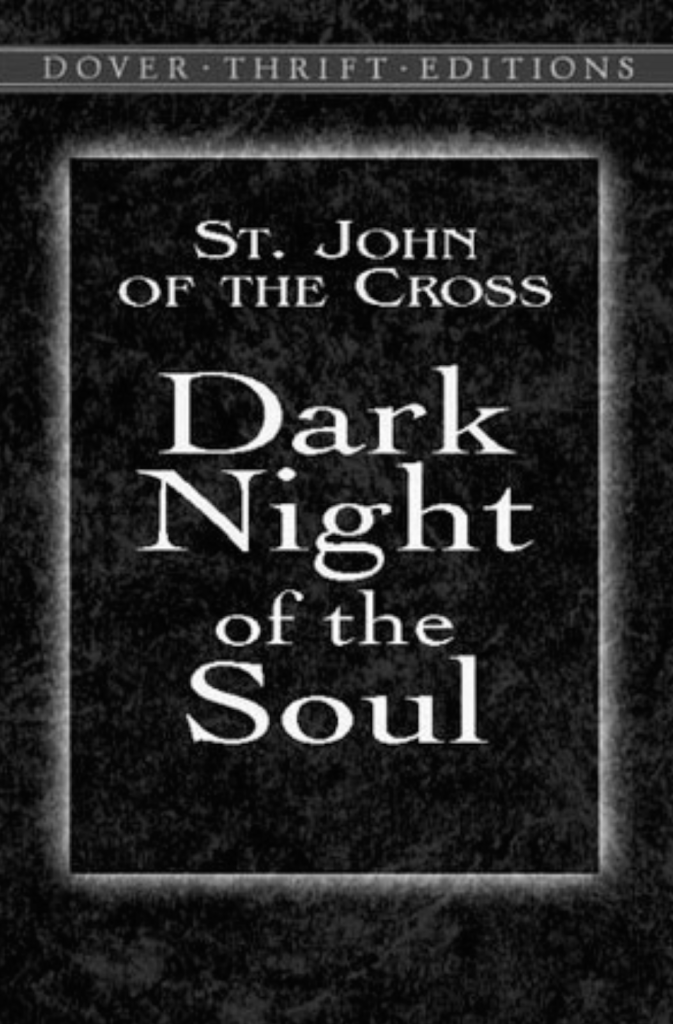
Dark Night of the Soul by St John of the Cross was an inspired choice. It is only after reading Dark Night that you become aware of its extraordinary influence. The following year we were hearing echoes in Merton. Angels – A Visible and Invisible History by Peter Stanford ticked a number of boxes. God is Good for You by Greg Sheridan was a surprisingly good book. It wasn’t the first time we touched on apologetics.
In the first year of the book club we read Bishop Barron’s Arguing Religion. It is based on talks he gave at Google and Facebook and is essentially a “how to guide” in having a religious argument. Faith Maps by Michael Paul Gallagher was a brilliant little book. He distils the writings of ten religious thinkers, and asks how they point us in the direction of Christian faith. A superlative overview of theology.
The Persistence of Faith – Religion, Morality and Society in a Secular Age by Rabbi Jonathon Sacks is a collection of essays delivered as the Reith Lectures in 1990. One of the many books that might be described as crisisology. Sacks is a beautiful writer and argues for a return to tradition.
And finally, last month we discussed Christopher West’s book Theology of the Body for Beginners. Nothing is more likely to generate passionate conversation than a discussion of eros; that persistent longing as described by St John Paul II, and St Augustine before him.
I wonder what Chesterton’s little debating club would have made of that?
